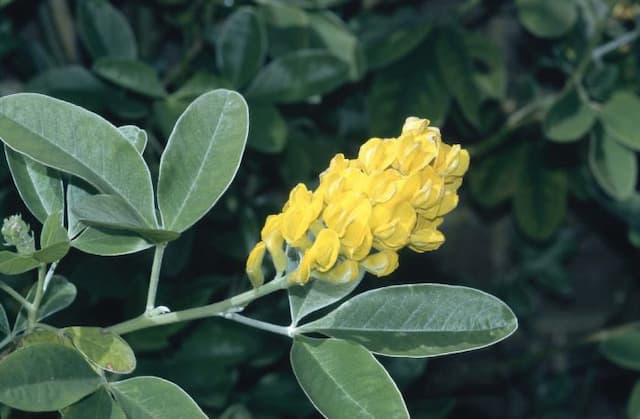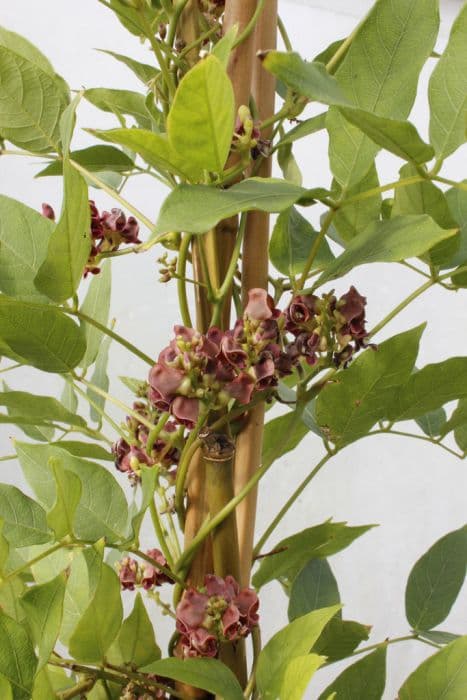Common oat Avena sativa



ABOUT
Oat plants typically grow to a height of 2-4 feet.
The leaves are long and narrow, growing up to 10 inches in length and 1 inch in width. The inflorescence (flowers) of the oat plant is a long, slender structure called a panicle, which can grow up to 12 inches in length.
The seeds, which are used for food and other purposes, are enclosed in a tough outer husk and are about 1/4 inch in size.
About this plant
 Names
NamesFamily
Poaceae
Synonyms
Oat, Cultivated oat, Haver
Common names
Avena orientalis, Avena sativa L.
 Toxicity
ToxicityTo humans
Oats are generally considered safe for human consumption and are a common ingredient in many foods, such as oatmeal and granola bars.
However, in rare cases, some individuals may be allergic to oats, which can cause symptoms like hives, itching, and difficulty breathing. Additionally, oats may contain traces of gluten, which can be harmful to individuals with celiac disease or gluten intolerance.
However, certified gluten-free oats are available for these individuals.To pets
Oats are not toxic to most animals, and are commonly fed to livestock such as horses, cattle, and sheep.
However, in some cases, excessive consumption of oats can cause digestive upset in animals, particularly in horses. This can result in conditions like colic, diarrhea, and laminitis.
Additionally, oats may contain mycotoxins, which are toxic substances produced by fungi that can grow on grain crops. Mycotoxin contamination can be harmful to animals if they consume contaminated feed over an extended period of time.
 Characteristics
CharacteristicsLife cycle
Annuals
Color of leaves
Green
Height
Up to 4 feet
Plant type
Herb
Hardiness zones
1
Native area
Mediterranean
Benefits
 General Benefits
General BenefitsNutrient-rich: Oats are a good source of essential nutrients, including fiber, protein, and a range of vitamins and minerals.
Versatile: Oats can be consumed in many different forms, including oatmeal, granola bars, cookies, and more.
Satisfying: Oats are filling and satisfying, thanks to their high fiber and protein content, which can help to promote satiety and reduce overall calorie intake.
Budget-friendly: Oats are an affordable and accessible food that can be found in most grocery stores.
Sustainable: Oats are a sustainable crop that requires relatively little water and fertilizer compared to other crops.
Easy to prepare: Oats are easy to prepare and can be cooked in a variety of ways, making them a convenient food for busy individuals.
Heart-healthy: Oats contain beta-glucan, a type of soluble fiber that has been shown to help reduce cholesterol levels and promote heart health.
Energy-boosting: Oats are a good source of complex carbohydrates, which can provide sustained energy throughout the day.
Digestive health: The high fiber content in oats can help to promote digestive health and regularity.
Delicious: Oats have a pleasant, nutty flavor that can be enjoyed in a variety of dishes. Medical Properties
Medical PropertiesLower cholesterol: Oats contain beta-glucan, a type of soluble fiber that has been shown to lower cholesterol levels.
Control blood sugar: Oats are a low-glycemic-index food that can help to stabilize blood sugar levels, making them a good choice for individuals with diabetes.
Reduce inflammation: Oats contain avenanthramides, which are antioxidants that have been shown to have anti-inflammatory properties.
Aid weight loss: The high fiber content in oats can help to promote feelings of fullness and reduce overall calorie intake, making them a good food for individuals trying to lose weight.
Improve gut health: The prebiotic fibers in oats can help to feed the beneficial bacteria in the gut, promoting digestive health.
Lower blood pressure: The antioxidants in oats may help to reduce blood pressure levels, lowering the risk of hypertension.
Enhance skin health: Oats can be used topically in skincare products to soothe and moisturize the skin, making them a popular ingredient in lotions, creams, and bath products.
Boost immunity: Oats contain a range of nutrients, including vitamins and minerals, that are important for maintaining a healthy immune system.
Reduce cancer risk: The antioxidants in oats may help to reduce the risk of certain types of cancer, such as colon cancer.
Improve sleep: Oats are a good source of tryptophan, an amino acid that is important for the production of serotonin, a neurotransmitter that helps to regulate mood and sleep. Air-purifying Qualities
Air-purifying QualitiesOats do not have significant air-purifying qualities.
 Other Uses
Other UsesAs a natural exfoliant: Oats can be ground into a fine powder and used as a gentle exfoliant in skincare products, such as facial scrubs and body washes.
In brewing: Oats can be used as an ingredient in beer brewing to add body and improve mouthfeel.
In pet food: Oats are a common ingredient in commercial pet food, as they are a good source of fiber and can help to promote digestive health in pets.
As a natural dye: Oats can be used to create a natural, beige-colored dye for fabrics.
In soaps and bath products: Oats can be used in soaps and bath products to soothe and moisturize the skin.
As a binder: Oats can be ground into a fine powder and used as a binder in recipes, such as meatballs or veggie burgers.
In biodegradable packaging: Oats can be used to create biodegradable packaging materials, such as trays and bowls.
In composting: Oat straw and other plant material from oats can be added to a compost pile to help create nutrient-rich soil for gardening.
As a natural insect repellent: Oats can be ground into a fine powder and sprinkled around plants to repel certain types of insects, such as slugs and snails.
In craft projects: Oats can be used in a variety of craft projects, such as creating textured art or filling sensory bins for children.
Interesting Facts
 Feng Shui
Feng ShuiOats are not typically used in feng shui practices.
 Zodiac Sign Compitability
Zodiac Sign CompitabilityOats are not typically used in astrology.
 Plant Symbolism
Plant SymbolismOats have been historically considered a symbol of abundance, fertility, and prosperity in some cultures.
They are often used in traditional harvest rituals and celebrations, and are associated with the earth element in certain spiritual practices.
Additionally, the act of sowing and growing oats can be seen as a symbol of hard work, patience, and perseverance, as they require time and effort to cultivate and harvest.
 Water
WaterOats require regular watering, particularly during their initial growth phase. They prefer well-draining soil that is kept consistently moist but not waterlogged.
In general, oats should be watered deeply once or twice a week, depending on weather conditions and soil moisture levels. Light
LightOats require full sun to partial shade for optimal growth. They can tolerate some shade, but may not grow as tall or produce as much grain in low-light conditions.
 Temperature
TemperatureOats are a cool-season crop that thrives in temperatures between 50-70°F (10-21°C). They can tolerate light frost and cool temperatures, but are not well-suited to hot, humid climates. Oats can typically survive temperatures as low as 20°F (-7°C) if they are well-established and have sufficient soil moisture.
 Pruning
PruningOats do not require pruning, as they grow tall and straight and are typically harvested for their grain before they reach full maturity. However, if you notice any diseased or damaged plants or if the oats are growing too tall and falling over, you can trim them back to promote stronger growth.
 Cleaning
CleaningNot needed
 Soil
SoilOats prefer a neutral to slightly acidic soil pH of 6.0-7.0.
The soil should be well-draining and have good moisture retention. You can amend the soil with compost or well-rotted manure before planting to improve its nutrient content and texture. Repotting
RepottingOats are not typically grown as houseplants.
 Humidity & Misting
Humidity & MistingOats are adaptable to a wide range of humidity levels and can tolerate both dry and moist conditions. They do not require any special humidity levels, as they obtain most of their moisture from the soil.
 Suitable locations
Suitable locationsIndoor
Cultivated only as microgreens or as cat grass
Outdoor
Cultivated all over the world as a summertime cereal crop
Hardiness zone
2-10 USDA
 Life cycle
Life cyclePlanting: Oats are typically planted in the early spring, as soon as the soil can be worked. The exact planting time will vary depending on the location and climate, but it is generally recommended to plant oats when the soil temperature is around 50°F (10°C).
Germination: After planting, the oats will begin to germinate within a few days to a week, depending on soil temperature and moisture levels. During this stage, the oats will begin to send out roots and shoots.
Vegetative growth: Once the oats have germinated, they will enter a period of vegetative growth, during which they will produce new leaves and stems. This stage typically lasts for several weeks, during which time the oats will continue to grow taller and stronger.
Flowering: Oats typically begin to flower in early summer, around June or July, depending on the planting time and growing conditions. The flowers are small and inconspicuous, and are arranged in dense clusters on tall stalks.
Seed development: After the flowers are pollinated, the oats will begin to produce seeds. The seeds are initially green and soft, but will gradually ripen and turn brown as they mature.
Harvest: Oats are typically harvested in late summer or early fall, around August or September. The exact timing will depend on the growing conditions and the desired level of maturity. If harvested too early, the oats may not be fully developed and may contain too much moisture. If harvested too late, the oats may begin to shatter and lose their seeds. Propogation
PropogationPropogation time
Spring - early summer
Propagation by seed: Oats are annual plants that produce seeds at the end of their life cycle. The seeds can be collected and stored for planting in the following season. To propagate oats by seed, you can either sow them directly in the garden or start them indoors and transplant them outside. The best time to sow oats is in the early spring, as soon as the soil can be worked. This will allow the plants to grow and mature before the hot summer months.
Sowing seeds directly in the garden: To sow oats directly in the garden, prepare the soil by loosening it with a hoe or tiller. Spread the seeds evenly over the soil and cover with a thin layer of soil, no more than 1/4 inch deep. Water the soil gently to keep it moist but not waterlogged. Oats can tolerate some shade, but they prefer full sun, so choose a location that receives at least 6-8 hours of direct sunlight per day.
Starting seeds indoors: To start oats indoors, sow the seeds in seed-starting trays or small pots filled with potting soil. Place the trays or pots in a sunny, warm location, and keep the soil moist but not waterlogged. After the seeds have germinated and the plants have developed their first true leaves, you can transplant them outside.
 Pests
PestsAphid, Armyworms, Cutworms, Wireworms
 Diseases
DiseasesRoot Rot, Rust, Smut









